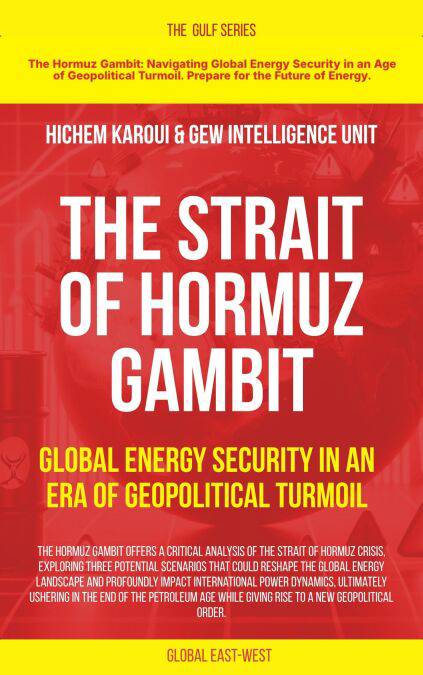
- Retrait gratuit dans votre magasin Club
- 7.000.000 titres dans notre catalogue
- Payer en toute sécurité
- Toujours un magasin près de chez vous
- Retrait gratuit dans votre magasin Club
- 7.000.0000 titres dans notre catalogue
- Payer en toute sécurité
- Toujours un magasin près de chez vous
The Strait of Hormuz Gambit: Global Energy Security in an Era of Geopolitical Turmoil EBOOK
The Gulf
Hichem Karoui, GEW Intelligence UnitDescription
"The Strait of Hormuz Gambit" analyses global energy security in light of escalating geopolitical tensions in the Middle East, with a specific focus on the fragile balance concerning the Strait of Hormuz. It outlines three potential future scenarios: a limited conflict between 2025 and 2026; a prolonged partial disruption from 2026 to 2028 leading to an energy crisis; and a complete strategic transformation of the global energy landscape from 2028 to 2035.
The economic stability of regional powers and global energy markets is heavily dependent on the uninterrupted flow of oil and gas through the strait. Any disruption threatens to cause significant price volatility and supply insecurity, necessitating urgent energy diversification and mitigation strategies. Enhancing the resilience of offshore infrastructure and ensuring maritime security through international cooperation are critical to managing these risks.
Beyond the immediate geopolitical risks, the book explores the broader shift towards a new energy paradigm. The rise of renewable energy, technological innovations, and the development of new energy corridors in Africa and the Americas are reshaping the global map. Hydrogen is identified as a crucial future energy carrier, with China and India expected to become major players. Concurrently, Europe is transitioning towards sustainable energy leadership, with energy diplomacy playing a key role in this process.
The report concludes by reflecting on the end of the oil age and the emergence of a new geopolitical order. It stresses that international cooperation and a shared, forward-looking vision are essential for navigating this transition to a secure and sustainable future.
The Strait of Hormuz Gambit* is an essential read for anyone interested in the interconnection between regional strife, global economics, and the evolving landscape of international energy security.
Spécifications
Parties prenantes
- Auteur(s) :
- Editeur:
Contenu
- Langue:
- Anglais
- Collection :
Caractéristiques
- EAN:
- 9798231322299
- Date de parution :
- 30-06-25
- Format:
- Ebook
- Protection digitale:
- Adobe DRM
- Format numérique:
- ePub

Les avis
Nous publions uniquement les avis qui respectent les conditions requises. Consultez nos conditions pour les avis.






